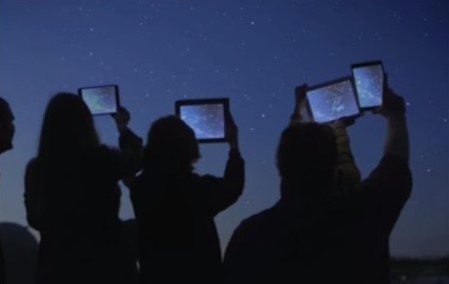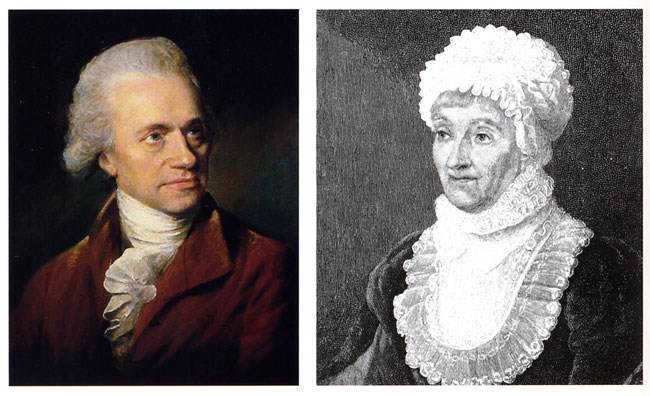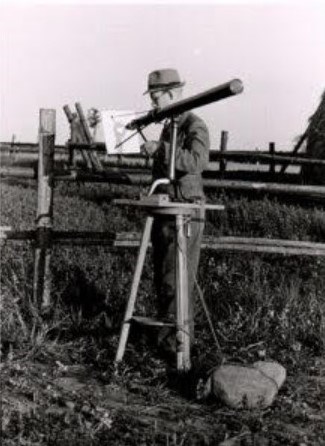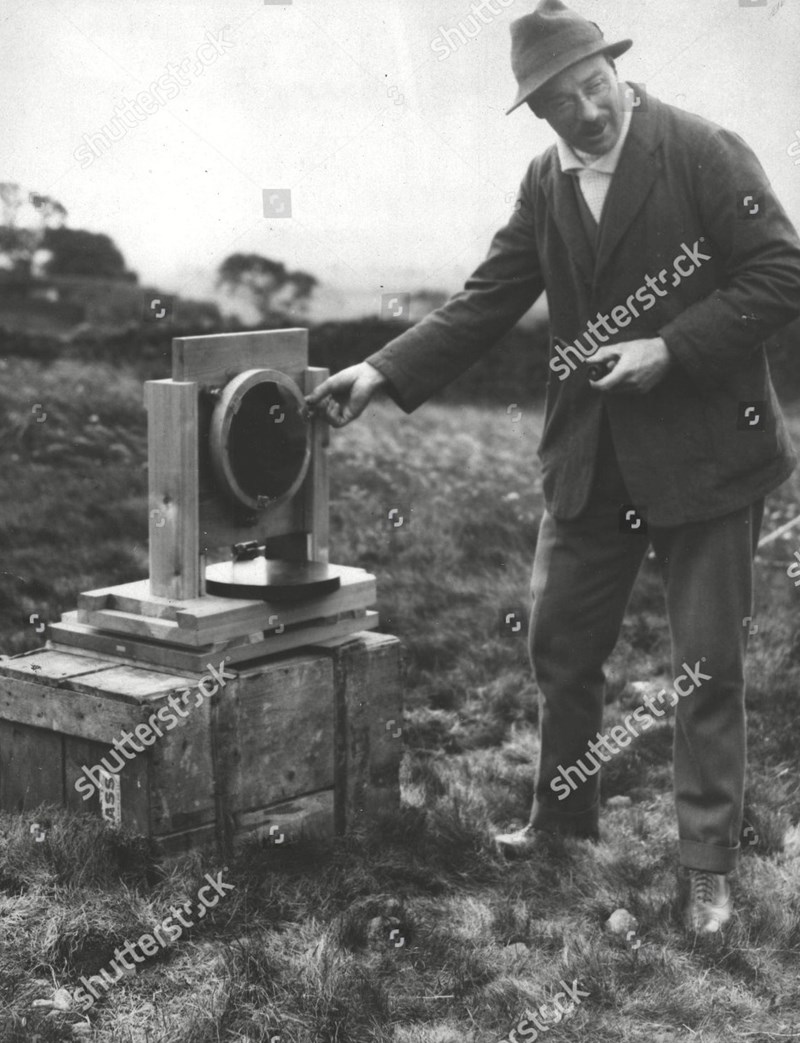
Star Charts - A Brief History
Added on 14 August 2024
STAR CHARTS AND NAMING CONVENTIONS
We can see about 10,000 stars on a dark night. You might think it would be a higher number, like grains of sand on a beach, but no, with just your eyes that's all. Still, that's a big number if you want to plot them all on a map of the sky and where do you place them accurately and how? There are difficulties with atmospheric refraction for example and that varies with altitude from the horizon and complex calculations are needed to allow for this. Then we need something like latitude and longitude to locate them on a chart but this too is complicated as lat. and long. don't work in the sky.
The meridian circle is an instrument for timing of the passage of stars across the local meridian, an event known as a culmination, while at the same time measuring their angular distance from the nadir.
At most locations on the Earth, the meridian is the only plane in which celestial coordinates can be indexed directly with such a simple mounting; the equatorial coordinate system aligns naturally with the meridian at all times. Revolving the telescope about its axis moves it directly in declination, and objects move through its field of view in right ascension.

So today we use the coordinates of right ascension and declination as described above.
HISTORY: 1900 years ago Claudius Ptolemy recorded stars in Greek and Latin (names). These were later translated into Arabic and are used today as phonetic translations into English. Some stars though retain their Greek and Arabic names like Betelguese being Arabic for 'shoulder', Deneb is derived from the Arabic word for 'tail', from the phrase ذنب الدجاجة Dhanab al-Dajājah, (tail of the hen) and Sirius is Greek for 'scorching'. He listed the names of the stars in his 'Algamest'.


After Ptolemy there were just too many stars to name and in 1603, German astronomer Johan Bayer came up with the idea of using the letters of the Greek alphabet in lower case to designate the brightest stars in a constellation followed by the Latin name for the constellation. (ie. Sirius is alpha (α) canis majoris then beta, gamma etc as the stars become fainter.
But there are only 24 letters in the Greek alphabet so in 1712, English astronomer John Flamsteed began numbering the stars from East to West in order of Right ascension (RA). Flamsteed's catalogue though was full of errors. For example, he listed 84 stars that didn't exist and in 1609 he saw Uranus and logged it as a star (34 Tauri). Some stars still have Flamsteed numbers in modern star charts, eg. 61 Cygni and 51 Pegasi.
So, these errors were largely corrected by Caroline Hershel in her 'Catalogue of stars' in 1798.

The next widely used catalogue was that of Hendry Draper, compiled by Annie Jump Cannon in 1910 at the Harvard College Observatory. These stars will be marked on your star chart as HD.
 pic 7
pic 7
Another widely used designation of stars which is used today is the Smithsonian Astrophysical Observatory. This is a list of 258,996 stars down to Magnitude 9 though coverage of fainter stars is spotty. These stars are numbered by RA within a 10 degree wide declination (DEC) band and cover the entire celestial sphere. These stars will be marked on charts and GOTO handsets as SAO.

Double stars were catalogued by brothers Otto and Frederik Struve (Otto 1819-1905) (Frederick 1793-1864) using the designation Sigma Σ and later Omicron Sigma OΣ followed by a number. They also listed variable stars using the letters R- Z and then double-lettered and after running out of letters they assigned V and numbers and that is how you will see them marked on star charts.
STAR CLUSTERS AND NEBULAS: Arguably the most famous of these catalogues was put together by Charles Messier who lived from 1730-1817. He was a comet hunter and was annoyed by all the faint diffuse objects that he kept mistaking for comets so he compiled a rather desultry catalogue which is not in any order by position in the sky, nor are they grouped by type. Yet it is probably the most used catalogue today, especially amateur astronomers. His first list was of 45 objects observed from the Hotel de Cluny in Paris published in 1774. He was using a 4-inch telescope from the window of the tower at the hotel.

The final version was published in 1781 and contained 110 star clusters, planetary nebula and galaxies but only covers the Northern hemisphere. Messier objects are marked on star charts and handsets as M. followed by a number.


Messier is buried in the Per Lachaise cemetery in Paris. There are over 70,000 graves here including Edith Piaf, Jim Morrison, Sarah Bernhardt, Oscar Wilde, Chopin, Maria Callas and Rene Lalique among many others.

Meet Antoine and Dalia Grelin from Las Vegas. They have a successful YouTube channel founded on astrophotography using the Messier list and because of this they decided to visit Messier's grave in Paris. They both felt that they owed something to Messier since it was his list that inspired them to create their work.
After hunting through the cemetery for a full day they eventually found Messier's grave and it was completely overgrown and untended. In fact his name was very faint on the inscription and obscured by very tenacious ivy plants. Saddened by such an important figure in history being largely forgotten they decided to raise funds to have the grave cleaned and maintained for the next 25 years at a cost of over £12,000. They succeeded in doing this and today the grave of Charles Messier is clean and free of weeds and is clearly marked as to who is in there.

Caroline and William Hershel 1750-1848 and 1778-1882 respectively working from Bath and later Slough in England, published a catalogue of 1000 new nebulas in 1786. After William died, Caroline continued the work and later updated it to 2500 nebulas and clusters and that was further added to by their son John. These objects were given names, for example, 'The bee-hive' etc.

Finally, all these previous catalogues were put together into one in 1888 by John Louis Emil Dryer and called the New General Catalogue. 7840 objects. Modern catalogues sometimes just show a number but that refers to the Dryer one. Other charts and handsets on GOTO telescopes list these as NGC. (New General Catalogue). Another common thing to see on handsets, charts and 'apps' is the INDEX catalogue. Dryer published supplimentals to his NGC one in 1895 and 1908 and they are designated (IC). example: the 'horse-head nebula' is IC434.

John Lois Emil Dryer. The NGC and IC catalogues.
Another thing you will see on star charts etc is a number preceded by the letter B. This is in reference to Edward Emmerson Barnard who copiled a list of 'Dark nebulas' from photographic plates of regions of the Milky Way. 349 Dark nebulas and these are designated on charts as (B) eg the actual 'horse head' is known as Barnard 33 or B33 which is embedded in the nebula IC 434 from the INDEX Catalogue.

Barnard
In 1962, Beverly T Lynds published a catalogue of Dark nebulas and they are marked on star charts as LDN followed by a number. She also created a list of bright nebulas and they are marked on your chart as LBN and a number. These were compiled from prints supplied by the Palomar Observatory Sky Atlas.
Other catalogues were compiled by Stewart Sharpless from the US naval observatory in 1959 and list Emission nebulas marked on your chart as SH. and a number.
Sven Cederblad produced a list of 330 bright nebulas in 1946, marked on your charts as CED. and a number.
English astronomer Philibert Melotte listed 245 star clusters in 1915 and are marked on charts as MEL and a number.
Sydney Van Den Berg listed 159 reflection nebulas in 1966 marked on charts as Vdb. and a number.
Swedish astronomer Per Collinder listed 471 open clusters in 1931 and are marked as CR and a number. The most famous of which is CR399 or Collinder 399, the 'Coathanger' cluster in Vulpecula.

Stewart Sharpless

Sven Cederblad

Philibert Melotte

Sydney Van Den Berg

Collinder 399. The 'Coathanger'
Lastly we have the CALDWELL catalogue. This was compiled in 1995 by the legendary Patrick Moore and consists of 109 star clusters, nebulas and galaxies which overlap with Messier and NGC and are designated of charts as C. followed by a number.

Patrick Caldwell Moore
To sum up.
For exploring the night sky with star-charts, apps and GOTO telescopes I would recommend the following.
The Cambridge star atlas and the Cambridge double star atlas, The Sky and Telescope pocket sky atlas (large version), Stellarium digital planetarium (PC or phone), Celestron Sky safari pro for phone. And the Philips Planisphere.
There are many more of course but for clarity and detail these are hard to beat.
Have a great time out there among the stars finding your way thanks to these aforementioned people who spent so much time by the light of candles and gas lamps plotting the dots and joining the lines.
Thank you


